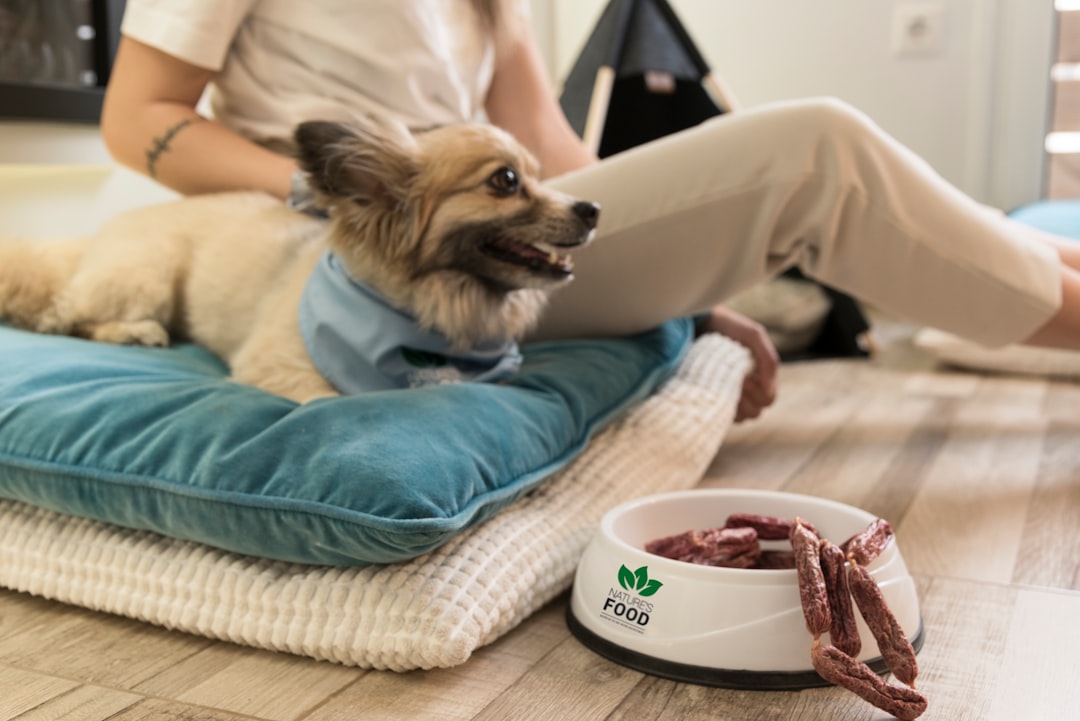How AI and Wearable Technology Are Revolutionizing Pet Care
Discover how cutting-edge AI and wearable devices are transforming pet health, nutrition, communication, safety, and veterinary care—ushering in a new era of personalized, proactive, and compassionate pet parenting.
Key Takeaways
- AI-powered wearable tech enables real-time health monitoring and early illness detection for pets.
- Personalized feeding and AI-driven entertainment improve pet wellness and engagement.
- Advanced AI tools bridge pet-human communication gaps for better understanding and care.
- Telemedicine and AI diagnostics enhance veterinary accuracy and accessibility.
- AI streamlines pet business operations while improving customer experience.
- Innovations in GPS tracking and biometric ID bolster pet safety and reunification.
- Ethical considerations around privacy, affordability, and education remain critical.
- The pet tech market is rapidly expanding with promising future developments.
Table of Contents
- AI-Powered Health Monitoring: Keeping Pets Healthy with Smart Wearables
- Personalized Pet Care Solutions: Tailoring Diet and Entertainment with AI
- Enhanced Pet-Human Communication: Bridging the Understanding Gap
- AI in Veterinary Care: Smarter Diagnostics and Telemedicine
- AI in Pet Care Business Operations: Streamlining and Scaling Services
- Safety and Identification Innovations: Smarter Security for Pets
- Pet Tech Robotics: Interactive Companions for Pets
- Challenges and Ethical Considerations in AI Pet Care
- Market Growth and Future Trends in AI Pet Care Technology
- Conclusion: Embracing the Future of AI-Powered Pet Care
1. AI-Powered Health Monitoring: Keeping Pets Healthy with Smart Wearables
Smart collars and wearable devices have revolutionized pet health monitoring by capturing vital signs and behavioral data continuously throughout the day. These devices use sophisticated sensors combined with AI algorithms to detect subtle changes indicating early health problems, empowering owners and veterinarians to intervene sooner.
How Smart Collars Work
- Sensors record metrics like heart rate, respiration, body temperature, activity, sleep, and signs of discomfort.
- AI algorithms analyze this data in real-time to identify abnormal patterns or deviations.
- Alerts notify owners and vets for early diagnosis before visible symptoms appear.
A leading example is the PetPace smart collar, which delivers continuous health tracking for dogs and cats. By analyzing changes in activity and vitals, it detects conditions such as arthritis or anxiety early, facilitating timely intervention.
Benefits of Wearable Health Monitoring
- Early disease detection leading to more effective treatment outcomes.
- Real-time insights into daily wellness and activity patterns.
- Enables remote veterinary consultations leveraging live data streams.
- Reduced healthcare costs through preventive, proactive pet care.
Case Study: PetPace’s AI Smart Collar
PetPace’s collar integrates clinical-grade sensors with telehealth, allowing veterinarians instant access to live pet health information. This technology particularly streamlines management of chronic illnesses and enhances overall quality of life for pets.
2. Personalized Pet Care Solutions: Tailoring Diet and Entertainment with AI
AI is extending pet care beyond health monitoring by offering customized nutrition and engagement tailored to each animal’s unique needs.
Personalized Feeding: Smarter Nutrition for Pets
- AI analyzes factors such as age, size, activity level, and metabolic changes for optimal calorie recommendations.
- Dynamic feeding schedules adjust based on real-time health or lifestyle changes.
- Dietary plans consider allergies, illnesses, and even taste preferences to improve long-term wellness.
This intelligent approach reduces obesity risk and ensures nutritionally balanced meals far beyond generic guidelines.
AI-Driven Entertainment: Intelligent Engagement
- Interactive AI-powered toys and robotic companions adjust playstyles to match a pet’s mood and temperament.
- Devices monitor behavior to personalize physical and mental stimulation through the day.
- Smart feeders combine mealtimes with motion-based games, encouraging activity and enrichment.
For instance, Ogmen Robotics' domestic AI playmate robot independently navigates the home to engage pets in interactive play and feeding, promoting emotional and physical health.
3. Enhanced Pet-Human Communication: Bridging the Understanding Gap
Artificial intelligence is bridging the long-standing communication gap between pets and humans by interpreting behavioral, facial, and vocal cues.
AI Interpretation of Pet Emotions
- Machine learning models analyze facial expressions and body language to detect emotional states.
- Some platforms decode hundreds of feline expressions, providing rich emotional insights.
- Experimental apps seek to translate dog barks into simple, meaningful feedback for owners.
These tools help owners recognize subtle signs of stress, excitement, or discomfort, enabling more responsive and intuitive care.
Real-World Applications
- Emotion-sensing cameras monitor pets when home alone, alerting owners if distress is detected.
- AI chatbots deliver immediate behavioral guidance based on real-time data, assisting in stress or behavior management.
Such innovations foster stronger bonds and improve welfare, especially for pets facing behavioral challenges.
4. AI in Veterinary Care: Smarter Diagnostics and Telemedicine
Veterinary healthcare is undergoing transformation as AI enhances diagnostic precision and enables remote consultation.
AI-Driven Diagnostics and Imaging
- AI assists vets by analyzing X-rays, ultrasounds, and lab results with pattern recognition for early anomaly detection.
- Facial analysis technologies quantify pain to better guide treatment choices.
Virtual Consultations and Telehealth
- Natural language processing enables efficient and guided virtual vet exams.
- Real-time wearable data review allows vets to monitor chronic and post-op patients remotely.
- This leads to greater care accessibility without sacrificing quality.
Platforms with integrated AI wearables, like those showcased in AI-powered smart collars, improve clinical outcomes and operational workflows.
5. AI in Pet Care Business Operations: Streamlining and Scaling Services
Beyond individual pet health, AI tools are optimizing the operation of pet-related businesses, enhancing efficiency and customer satisfaction.
- Marketing automation schedules posts, crafts campaigns, and tracks engagement analytics.
- AI chatbots and voice assistants provide 24/7 customer support.
- Employee training benefits from personalized AI-driven learning platforms.
- Automated scheduling and reputation management improve client experience and retention.
Kennel Connection, for example, leverages AI platforms like ChatGPT to automate communication and content generation, boosting efficiency and scalability.
6. Safety and Identification Innovations: Smarter Security for Pets
AI-enhanced wearables introduce advanced safety features, making it easier to protect and locate pets.
GPS Tracking and Geo-Fencing
- AI-powered GPS collars show live locations and establish virtual safe zones.
- Alerts notify owners immediately if pets wander beyond designated areas.
Biometric ID: A Gentle Alternative to Microchipping
- Systems like Petnow's nose-print identification offer non-invasive, highly accurate pet identification.
- Biometric databases enhance data protection while speeding up lost-pet recovery.
Facial Recognition and Monitoring Cameras
- AI-enabled cameras track pet identity and emotional states in real-time.
- Smart products like Petvation’s pet doors use facial recognition to allow access only to registered animals.
Services such as Petco’s Love Lost database employ facial recognition to reunite lost pets with families compassionately and free of charge.
7. Pet Tech Robotics: Interactive Companions for Pets
AI-powered robotic companions are emerging as intelligent, interactive playmates that promote emotional and physical well-being.
- Robots use sensors and learning algorithms to respond dynamically to pet behavior.
- They encourage movement, curiosity, and obedience through playful engagement.
- Some assist with feeding and training by providing contextual feedback to pets.
Ogmen Robotics’ AI companion robot is a prime example, autonomously moving through the home to interact with pets, especially when owners are away.
Though still developing, this sector holds promise to redefine how pets receive care and companionship during solitary hours.
8. Challenges and Ethical Considerations in AI Pet Care
As AI gains ground in pet care, important challenges around ethics, privacy, and accessibility must be addressed to ensure responsible adoption.
Data Privacy and Security
- Wearables collect sensitive biometric data requiring robust security and privacy protocols.
- Clear policies are needed to prevent misuse, mirroring regulations for human health data.
Affordability and Accessibility
- High-tech pet care products may be financially out of reach for many owners.
- Efforts must promote broad access to avoid increasing care disparities.
Owner Education and Trust
- Effectiveness depends on owners understanding and correctly using the technology.
- Transparency around AI strengths and limits builds trust and responsible use.
Addressing these ethical and practical challenges is essential to ensure that AI serves pets and their people with fairness, safety, and empathy.
9. Market Growth and Future Trends in AI Pet Care Technology
The pet tech market is booming alongside growing pet ownership worldwide, with AI and wearables at the forefront of innovation.
- By 2025, over 70% of U.S. households are projected to own pets, according to the American Pet Products Association.
- Global pet tech consumer spending is expected to exceed $50 billion within the next decade.
- Key growth markets include the U.S., Brazil, UK, China, and India.
What’s Ahead?
- More integrated wearables delivering seamless monitoring of health, habits, and environment.
- Smarter, more reliable diagnostic AI models enhancing veterinary care.
- Robotic companions evolving toward emotionally responsive caregiving.
- Expansion of telemedicine to serve remote or underserved communities.
These trends point to a future where AI-powered technology is central to compassionate, intelligent pet care on a global scale.
10. Conclusion: Embracing the Future of AI-Powered Pet Care
AI and wearable technologies are transforming pet care, providing smarter health insights, personalized nutritional and behavioral support, and deeper pet-human understanding. Combined with enhanced veterinary diagnostics and business operations, these innovations promise happier, healthier pets and empowered owners.
Though challenges around privacy, affordability, and owner education remain, the potential impact of AI-driven tools is undeniable. By embracing these advancements, the pet care community can move toward a proactive, personalized, and compassionate future.
At Petocart, we proudly support this journey with our curated selection of innovative AI-integrated pet accessories, designed to help your furry companions live their happiest, healthiest lives.
Explore our latest products and discover how technology can elevate your pet’s health, safety, and happiness today.
Frequently Asked Questions
How do AI-powered smart collars detect pet health issues early?
Smart collars use sensors to continuously track vital signs like heart rate and activity. AI algorithms analyze this data to identify abnormal patterns or changes that may indicate health problems before symptoms become visible.
Can AI help customize my pet’s diet?
Yes. AI tools analyze factors such as your pet's age, size, activity, and health conditions to create personalized feeding plans that optimize nutrition, manage weight, and accommodate allergies or preferences.
Are AI pet communication tools reliable?
While still developing, AI systems trained on extensive behavioral data can accurately interpret pet emotions and cues, helping owners respond better. However, these tools complement rather than replace personal observation and vet advice.
How secure is my pet’s data on AI wearables?
Responsible manufacturers implement encryption and strict privacy policies to protect pet biometric data. Owners should research device security features and choose reputable brands.
Where can I find AI-integrated pet care products?
Petocart offers a curated range of innovative AI-powered pet accessories supporting health, safety, and engagement. Visit our website to explore the latest technology for your pet’s well-being.







